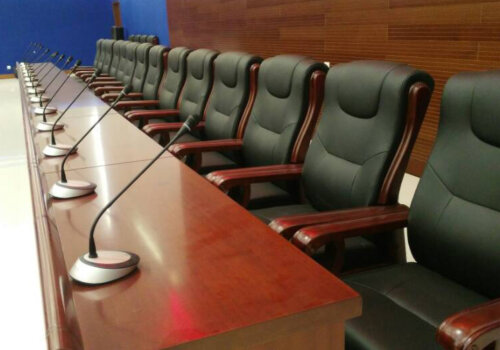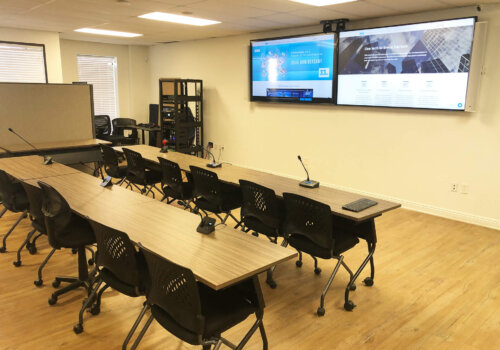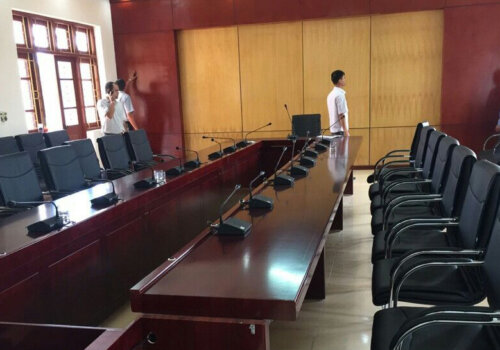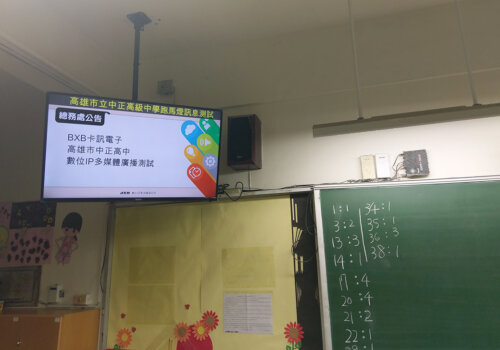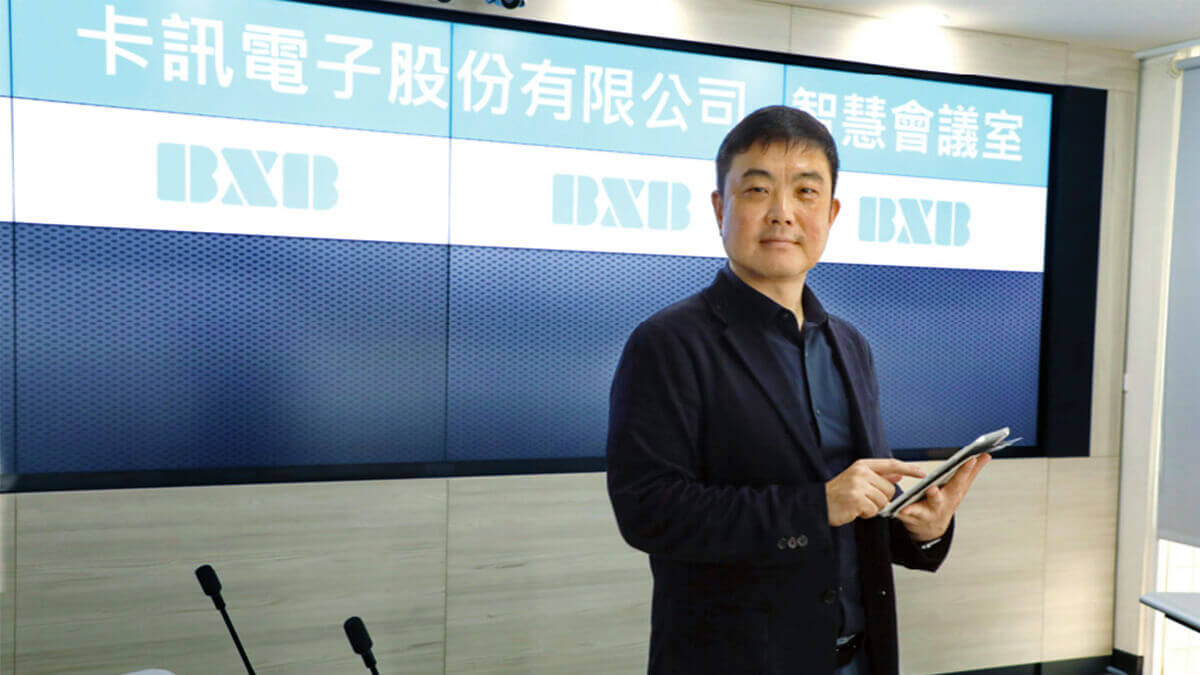
Remember the broadcasting systems at schools when you were a kid? Up to 60% of them are from BXB. Even with the highest market share in Taiwan, President Hung stayed alert. They cannot limit themselves to making only the equipment. As early as ten years ago, BXB started to layout its digital transformation. That’s how they achieved the production of smart meeting rooms that are favored today by large-sized enterprises.
The school’s broadcasting system is a childhood memory many Taiwanese have in common. Every time when we hear: “Student X from class B in Year A, please come to the Office of Student Discipline.” Students would start gossip whispering about what happened to student A’s family, or what trouble did student A get into, etc. Very few know that up to 60% of the conference and public broadcasting systems are made by the same company: BXB, who ranked first in market share in Taiwan. BXB’s customers range from the Presidential Office Building, Executive Yuan, Central Weather Bureau, National Biotechnology Research Park of Academia Sinica to NCCU, NSYSU, NCKU, and many national universities. Adding to their remarkable performance in the Taiwanese market, BXB’s public broadcasting system also ranks first in market share in Indonesia.
Founded in 1991, BXB is one of the hidden champions in Kaohsiung, southern Taiwan. Their main products include broadcasting systems, conference systems, IP multimedia publishing systems, image tracking devices, and language classroom systems. Under BXB’s own brand, these products have been sold to more than 50 countries around the world over the past 30 years.
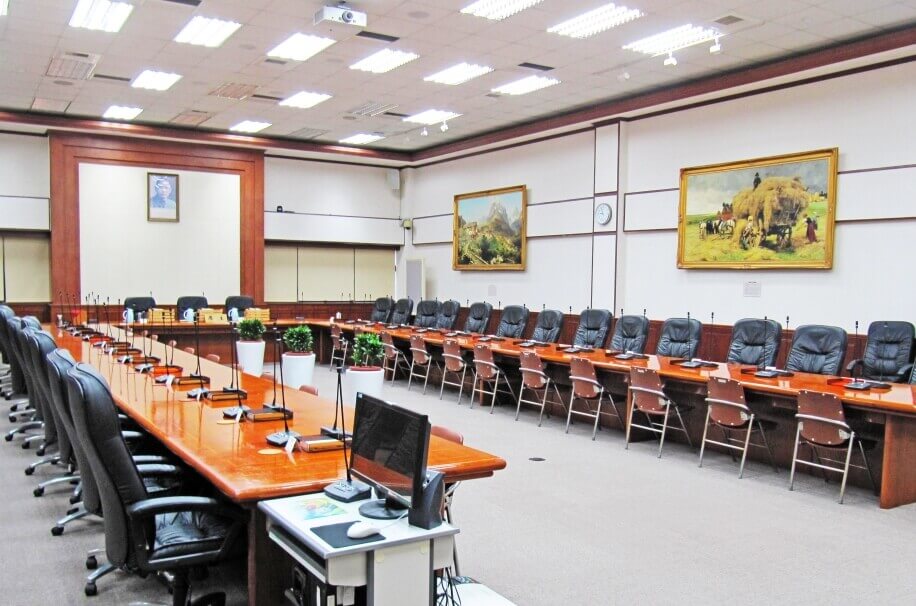
Taiwan Ministry of Civil Service

Academia Sinica Biotechnology Park

National Sun Yat-sen University

Kaohsiung Yawan Innovation Park War Room
In the last few years, as the need for work from home and remote working increases, there was a surge in the need for video conferences. This encouraged BXB Electronics to make their products smarter. By integrating updated audiovisual IoT to the systems, traditional analog broadcasting systems have been transformed into smart conferencing systems. Large companies such as HIWIN Technologies Corp. and ASE Technology Holding Co., Ltd. have become BXB’s most valuable customers. After using BXB’s smart conferencing systems, many CEOs and Presidents hope to fully upgrade all their meeting rooms.
Product thinking: meeting the needs of humanity
Walking into BXB’s smart meeting room, most people are wowed by the sight of the enormous LCD video wall, measuring 540 cm by 150 cm. This is also the most eye catching feature of the product. President Hung, of BXB Electronics declared “Human are the core of meetings. The equipment should serve the needs of the human, rather than having humans settling with the equipment.”
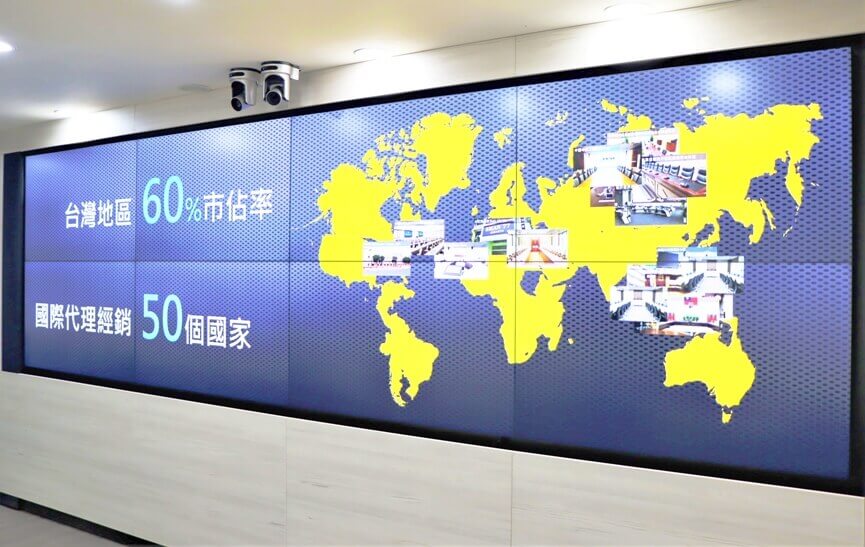
In the past, several people would have to run around lowering the curtains, turning off the lights, turning on the projector, and adjusting the screen size and focal length before a meeting begins. And traditional projectors use a 16:9 projection screen, the height and width are limited. The lower part of the screen that’s less than 75 cm from the ground could be ineffective because it is possible that only people sitting in the first row are able to see the contents in the lower part of the screen. People will be stretching their necks for a better view and moving their chairs around in meetings. That is not only troublesome, but also causes unnecessary costs every time the company holds a meeting. The BXB team then began to consider, how can the equipment serve the needs of the users better?
The first change they made in the construction of a smart conference room was to extend the projection screen into a 32:9 LCD video wall. They moved the contents in the lower part of the screen to the left or right so that every participant will be able to see all the contents. In addition, cameras will be set up at the front and at the back of the meeting room to adjust displays according to different circumstances in meetings.
A more important key is that the expansion and maintenance is easier, as the system is connected to the audiovisual IoT. In the past, a space will be reserved for future expansion at the beginning of the construction of a conference system. The reserved spaces tend to be idle in the end. Space reservation is not needed in audiovisual IoT. When an expansion is required, connecting a case with the relevant function to the system would do the work. (Related products: The Best AV over IP Solution- VDM Series)
Customized services attract large-sized enterprises
BXB also put a good amount of effort into hardware interface development. In order to make the system adapt and blend into meeting rooms of different sizes and shapes in different enterprises, the concept of system furniture is adopted, and the TV wall itself is composed of eight screens spliced together. The number of screens can be increased or decreased according to the size and needs of the meeting room. The wooden body of the video wall is a system cabinet. The site measurements will be taken on-site. The body will be manufactured in the factory. The installation of the system only requires assembling the parts together. There is no dust. The construction time is minimized, and the noise is reduced.
In addition to their strengths in software and hardware, BXB focuses even more on the services they provide. They emphasize on “close companionship”. Therefore, they will first send a specialist to the corporate customer for in-depth discussion to understand their needs, and then customize the equipment in favor of the customer. Take for example, one of their customers is a construction company. In their original meeting room, the CEO’s seat and the projection screen are at the 2 ends of a long table. During every meeting, the CEO always had to keep moving forward because he can’t see the screen clearly. To solve this awkward situation, BXB rotated the new LCD screen by 90 degrees and made the screen parallel to the meeting table. This way, everyone is at equal distance away from the screen. The CEO no longer has to walk around in the meeting room. “That’ll reduce the time spent scolding employees,” said Jerry Hung humorously.

Case example: Darmaw Construction Co., Ltd – The meeting table and the multi-screen video wall are parallel. Every participant can see the presented data clearly. The broad perspective display improves the efficiency of discussion and decision-making.
Po-Chou Pan, deputy manager of HIWIN Technologies Corp., who has gradually adopted BXB’s systems, stated that HIWIN is pleased by the fact that BXB provides technical customization for different circumstances in meetings. They provide a line of dedicated services from planning, designing, discussing, constructing, product training, and after-sales services that meet the needs in sales, technology, and product training around the world. Currently, BXB has completed the upgrading of one smart meeting room for HIWIN. They are still working on the construction and enhancement of 3 other meeting rooms. The large conference hall of the International Conference Center at the headquarters has also been included in the future upgrade plan.
The ten years of work on self-transformation
The fact that BXB’s smart meeting rooms are favored by large-sized enterprises is a result of ten years of planning and R&D into BXB’s digital transformation. About ten years ago, BXB was already facing a bottleneck. “I realized that our original analog broadcasting system was a product of the ‘Will you ever need to repurchase?’ type.” said Jerry Hung with a smile. He once went to a friend’s office and found out that the BXB product they were using had not been produced for ten years. There hadn’t been problems during the 18 years of use of the product. Thus, there wasn’t a need to replace it. “The thought startled me. If we stay in the comfort zone of equipment manufacturing, the company won’t be able to survive,” he said.
Beyond the expectation to break through the bottleneck, Jerry Hung also proposed several business growth strategies.
The first strategy was to focus on increasing the revenue from the existing customers. In the past, the charge for building an analog conference system or broadcasting system for a customer was roughly 200,000 NT dollars. However, after integrating audiovisuals and digitalization into their products, the sales revenue they make from a single customer increased by at least ten times the original amount.
The second strategy is that broadcasting systems require a lot of talent from the audio engineering industry. Unfortunately, very few relevant departments in Taiwan train talent in this area. However, there is plenty of talent in the field of information and communication. Why not bring BXB’s original core abilities and the existing IT talent in Taiwan together to expedite the transformation?
Third, BXB’s analog broadcasting system reached 60% market share in Taiwan more than 10 years ago, but where can they find the motivation to continue the growth to the next stage? Jerry Hung believes that “We should use this 60% as the bottom line, integrate horizontally, and make products that customers need, but we didn’t have before.”
To accelerate the transformation, BXB took the multi-location marketing strategy. They set up two internal R&D teams, and an external collaborative team each in the following three locations: Industrial Technology Research Institute, Institute for Information Industry, III, and NSYSU. The five teams worked on the same digital audiovisual streaming technology without collaborating with each other. And why did Jerry Hung purposefully arrange the teams this way? In his opinion, like putting all your eggs in one basket, assigning only one team for the R&D of the technology has a high risk of failure. Having multiple teams work on the same technology would increase the success rate. And even if all of them failed to find a valid solution, the five teams would help the company gather extensive information of professional knowledge in the area. This would help the company join the industry of audiovisual IoT swiftly.
Endure the lonely road to success
Transformation is not only about technological upgrading, but also the investment of resources. “I had to raise a large amount of funds. But the payback on the investments required a long time, we couldn’t see the outcome immediately” said Jerry Hung. Due to the transformation, there is an exponential growth in the number of employees and R&D costs. The amount of inventory has also increased significantly. The money was invested, but there wasn’t a proportional growth in sales revenue. Being blamed was inevitable. “Success is a lonely road. I had to endure the loneliness and the situations of being questioned.” Jerry Hung recalled that as the toughest part in the transformation process.
In addition to R&D, communication, and resource finding, he also had to precisely work out the most economical marketing strategy. “Award winning” is an important means. Because by winning an award, the winner will not only receive R&D subsidies, but also get publicly promoted by the government. From 2012, BXB has been continuously enrolling themselves in competitions, and receiving awards, including the “Excellent Performance Award of Outstanding Suppliers” in the SBIR program in Kaohsiung City, the National Invention and Creation Award established by MOEA, two If Design Awards in Germany, and seven Taiwan Excellence Awards. These slowly built up a reputation for BXB.
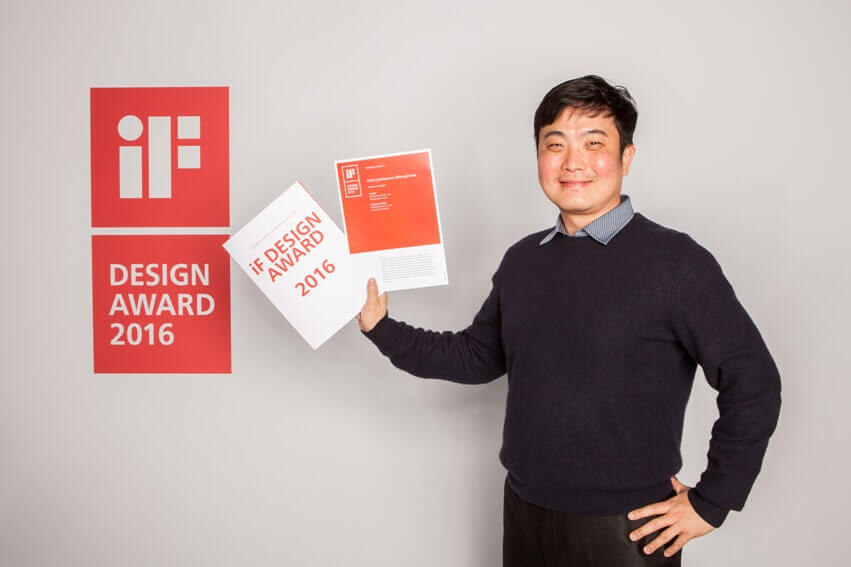
German iF Design Award

Taiwan Invention and Creation Award

Dun & Bradstreet SME Elite Award
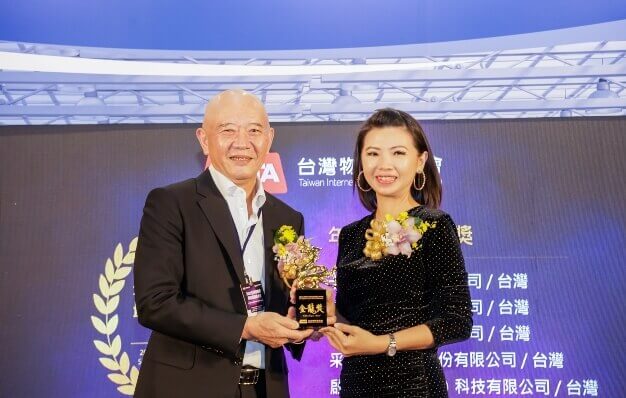
Best Model of Global Internet of Things and Smart Services – Golden Dragon Award
“Branding” has always been Jerry Hung’s goal. He believes that after the transformation in their service products and the establishment of a concrete foundation, an IPO would be the next step to take. BXB has registered on the GISA to be listed on Taiwan stock market, hoping that the approval will be officially issued in 2024 in order to advance the raise in the company’s value.

